The document discusses building a reactive data-access layer to MongoDB using Play and Scala, highlighting the advantages of non-blocking and asynchronous I/O operations over traditional synchronous models. It details the implementation of a data access layer utilizing futures and traits, showcasing concepts like Active Record design patterns and schema-less data management. Additionally, the document outlines pros and cons of this approach with respect to ease of use and limitations regarding futures and data relationships.

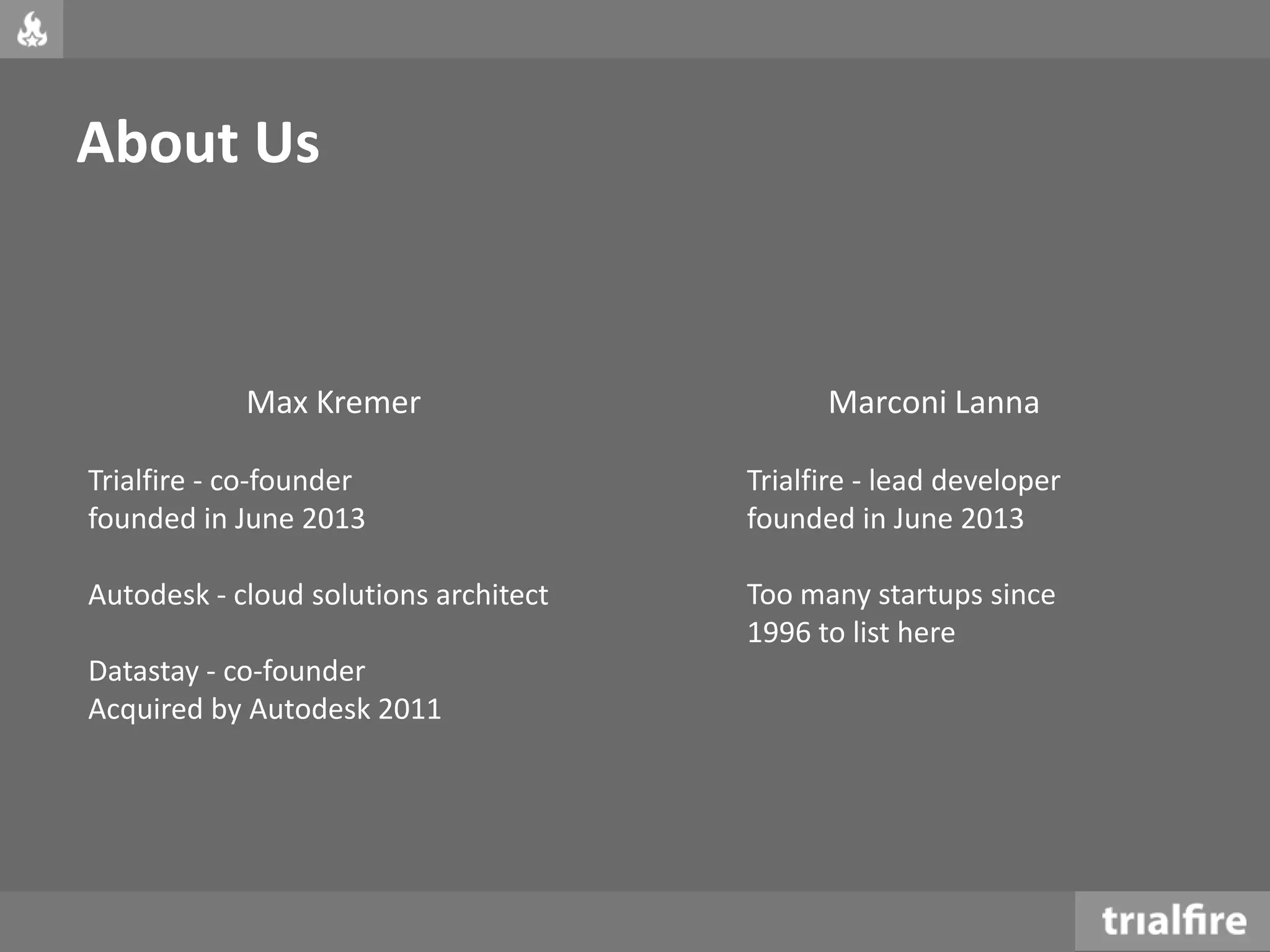

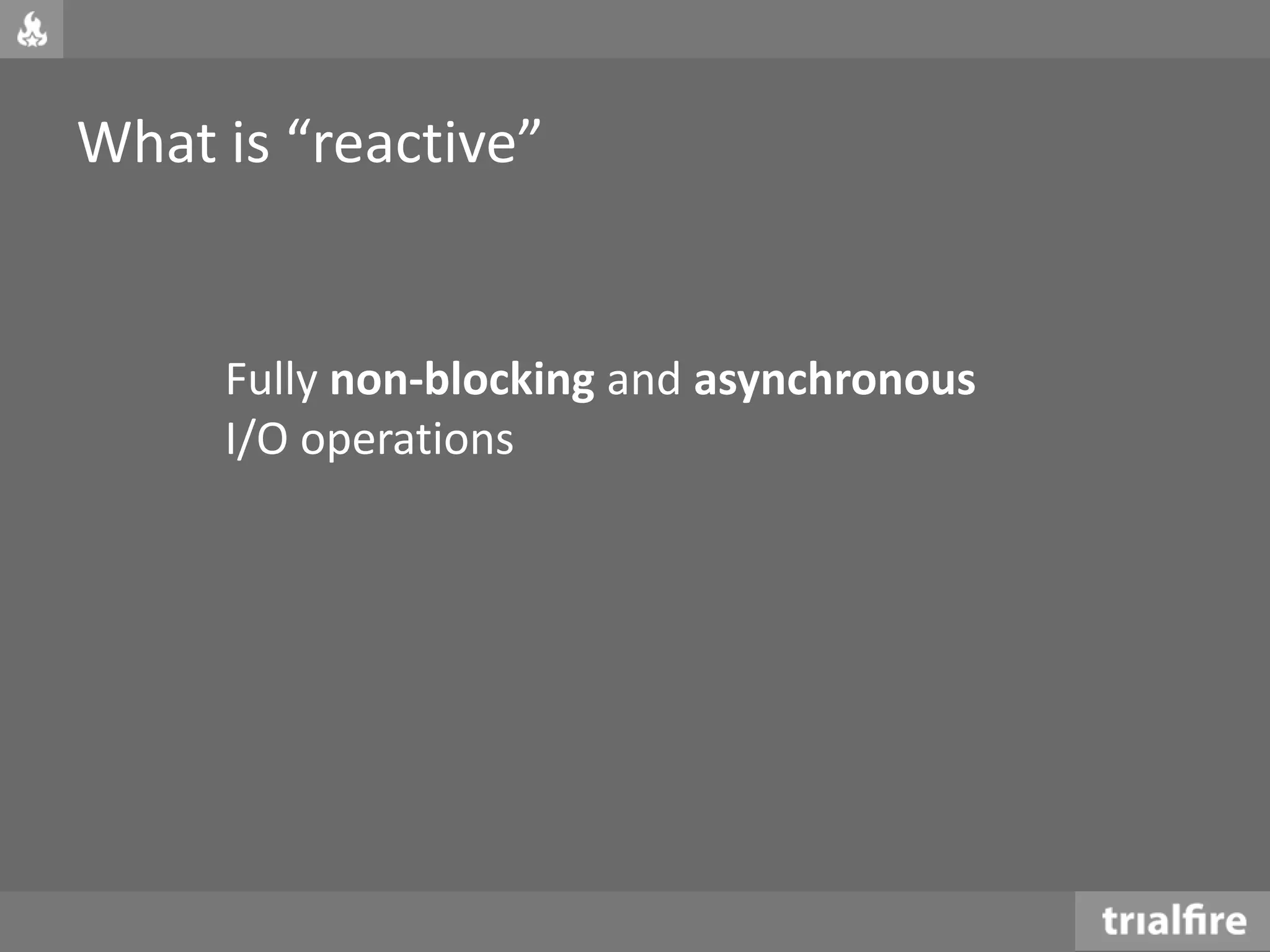
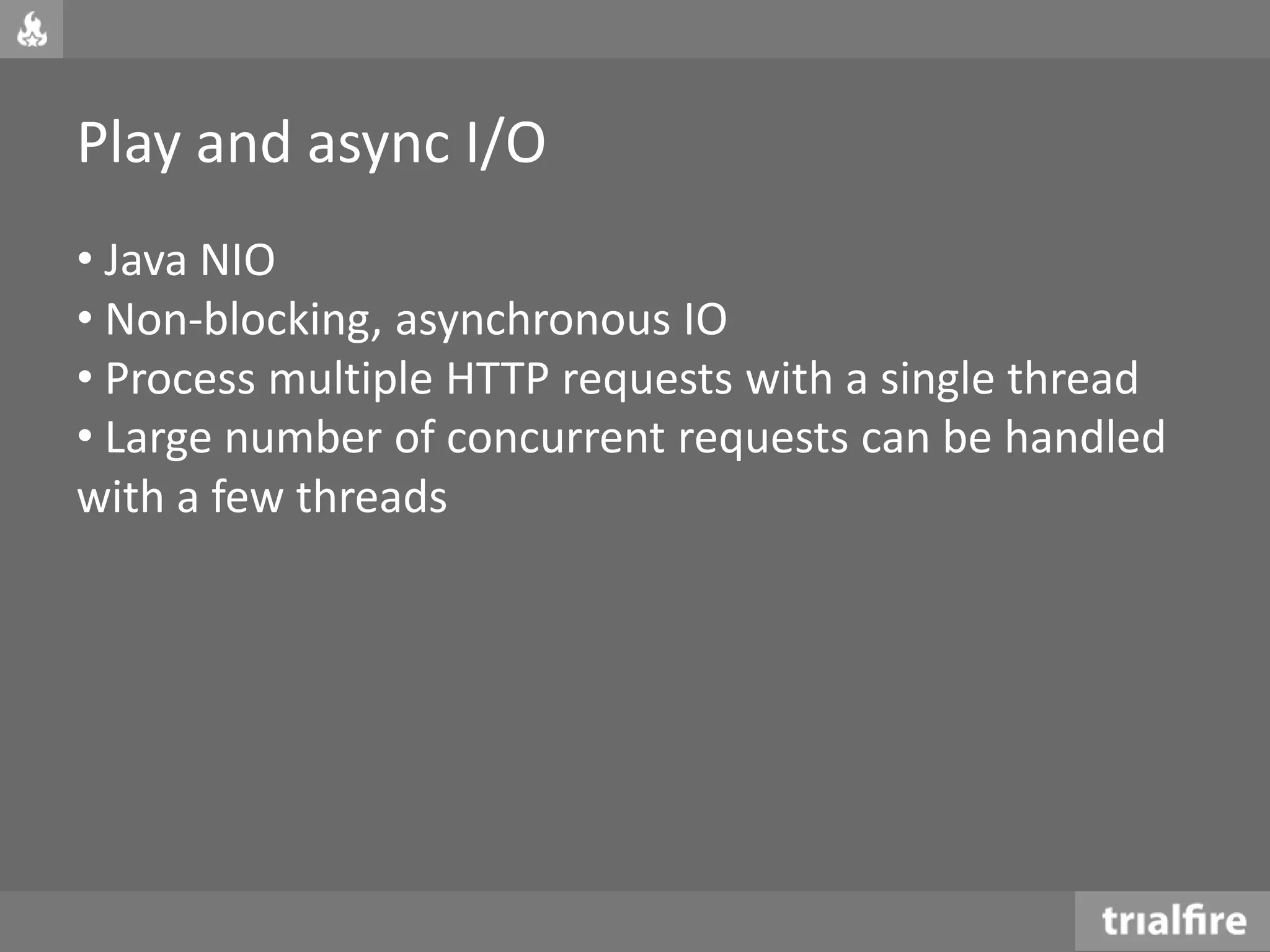
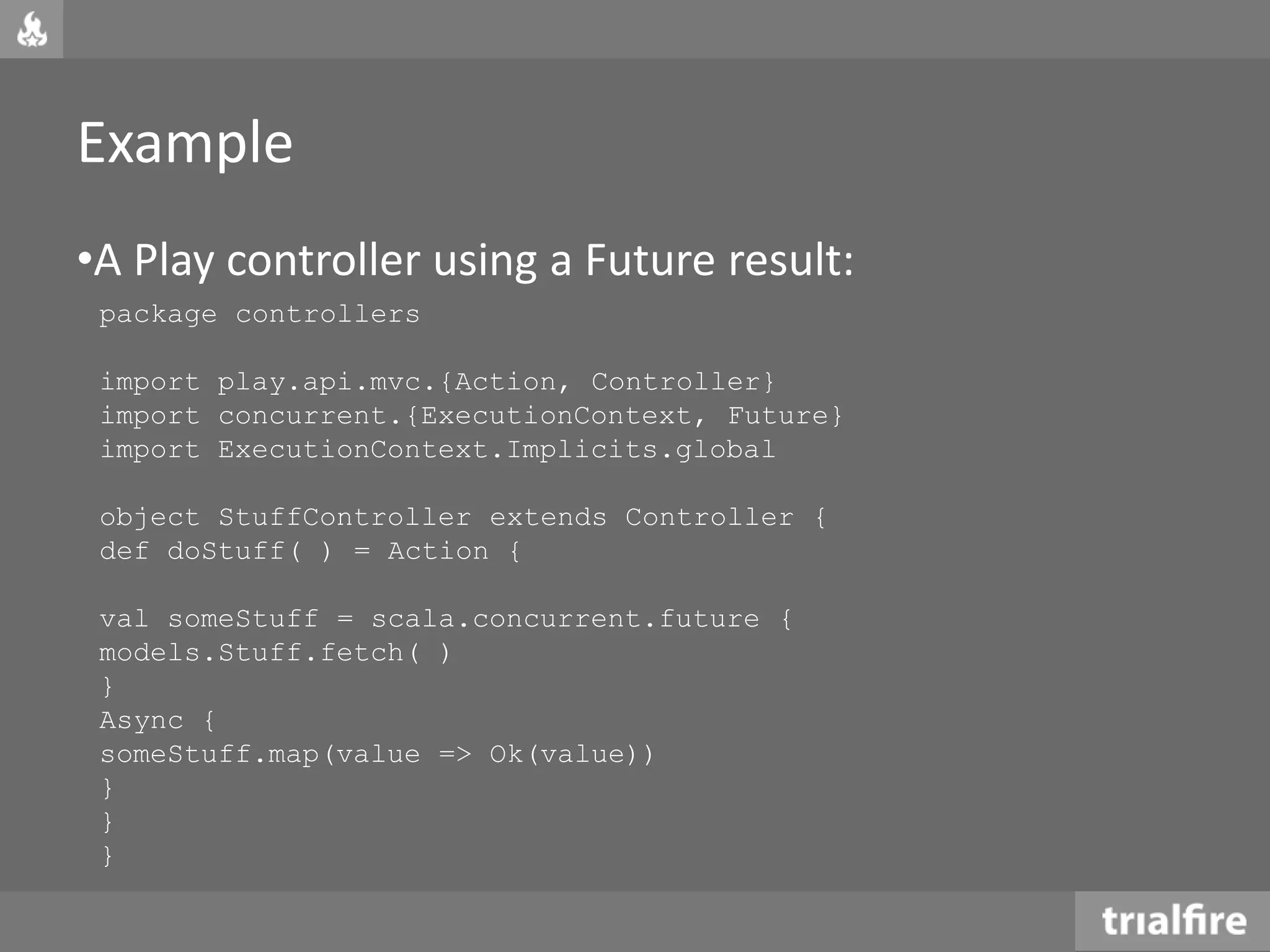
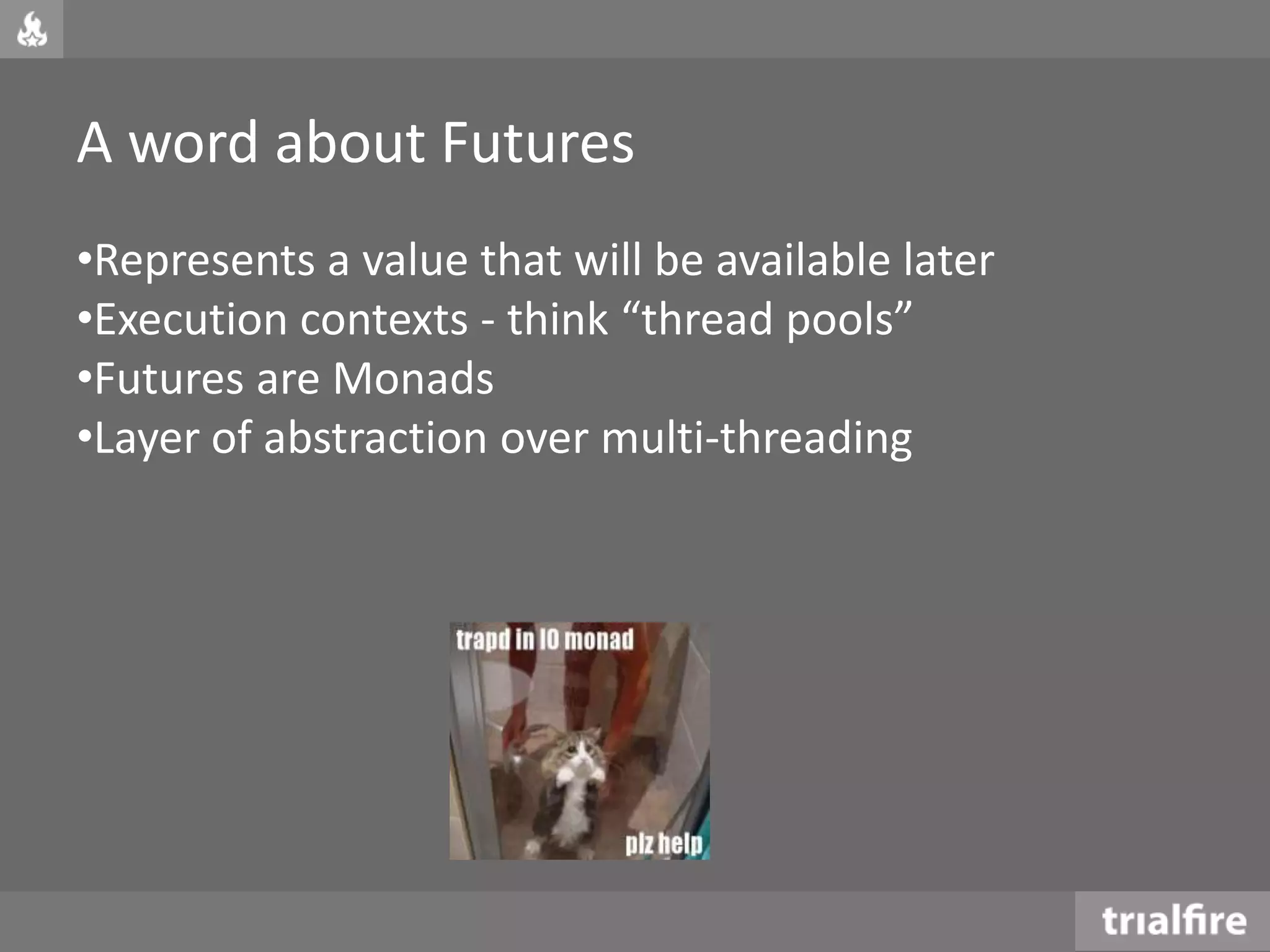

![Persistence using Traits
import play.api.libs.json.Json
case class User
( id : Option[BSONObjectID]
, firstName: String
, lastName : String
, email : String
, password : String)
object User extends DataAccess[User] {
def collectionName = “user”
implicit val format = Json.format[User]
}](https://image.slidesharecdn.com/playscalareactivemongo-130920133126-phpapp02/75/Play-scala-reactive-mongo-9-2048.jpg)
![The Data Access Trait
trait DataAccess[M] {
def collectionName: String
implicit val format: Format[M]
private def db = ReactiveMongoPlugin.db
private def collection = db[JSONCollection](collectionName)
def insert(instance: M): (BSONObjectID, Future[LastError]) = {
val id = BSONObjectID.generate
(id, collection.insert(Json.toJson(instance) ++ id))
}](https://image.slidesharecdn.com/playscalareactivemongo-130920133126-phpapp02/75/Play-scala-reactive-mongo-10-2048.jpg)
![The Data Access Trait (cont’d)
def update(instance: M): Future[LastError] = {
instance.id map { id =>
collection.update(id, Json.toJson(instance))
} getOrElse Future.successful(LastError(err = Some("Invalid
ID"))
}
def byId(id: BSONObjectID): Future[Option[M]] = {
collection.find(id).cursor.headOption map {
_ flatMap { doc: JsObject =>
doc.asOpt[M]
}
}
}](https://image.slidesharecdn.com/playscalareactivemongo-130920133126-phpapp02/75/Play-scala-reactive-mongo-11-2048.jpg)
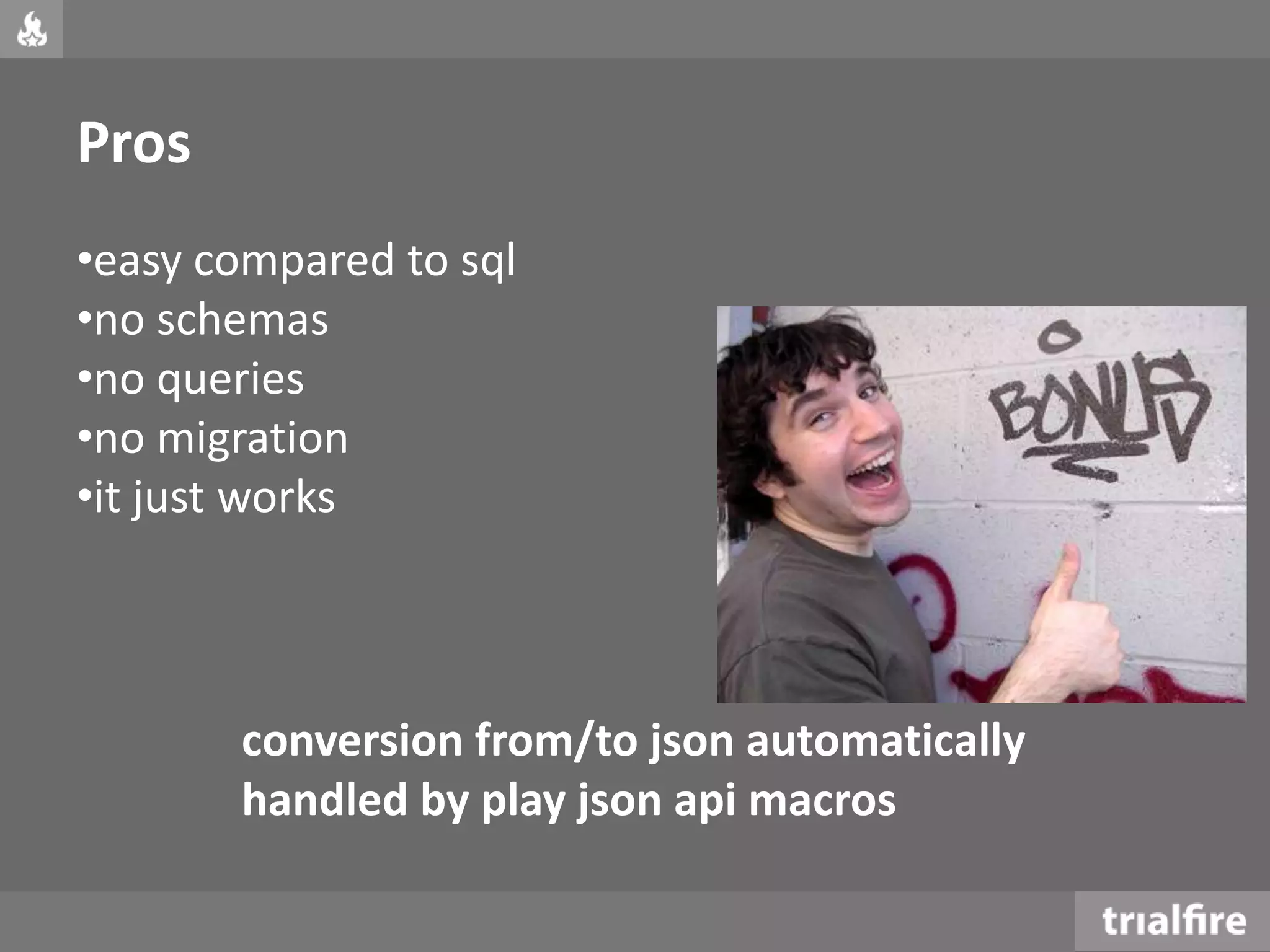

![Cons (cont’d)
case class Book
( name : String
, author: Author)
case class author(name: String) {
lazy val books: Seq[Book] = Book.byAuthor(this)
}
lazy val books: Future[Seq[Book]] = Book.byAuthor(this)
val books = author.books
author.books map { books =>
...
}](https://image.slidesharecdn.com/playscalareactivemongo-130920133126-phpapp02/75/Play-scala-reactive-mongo-14-2048.jpg)
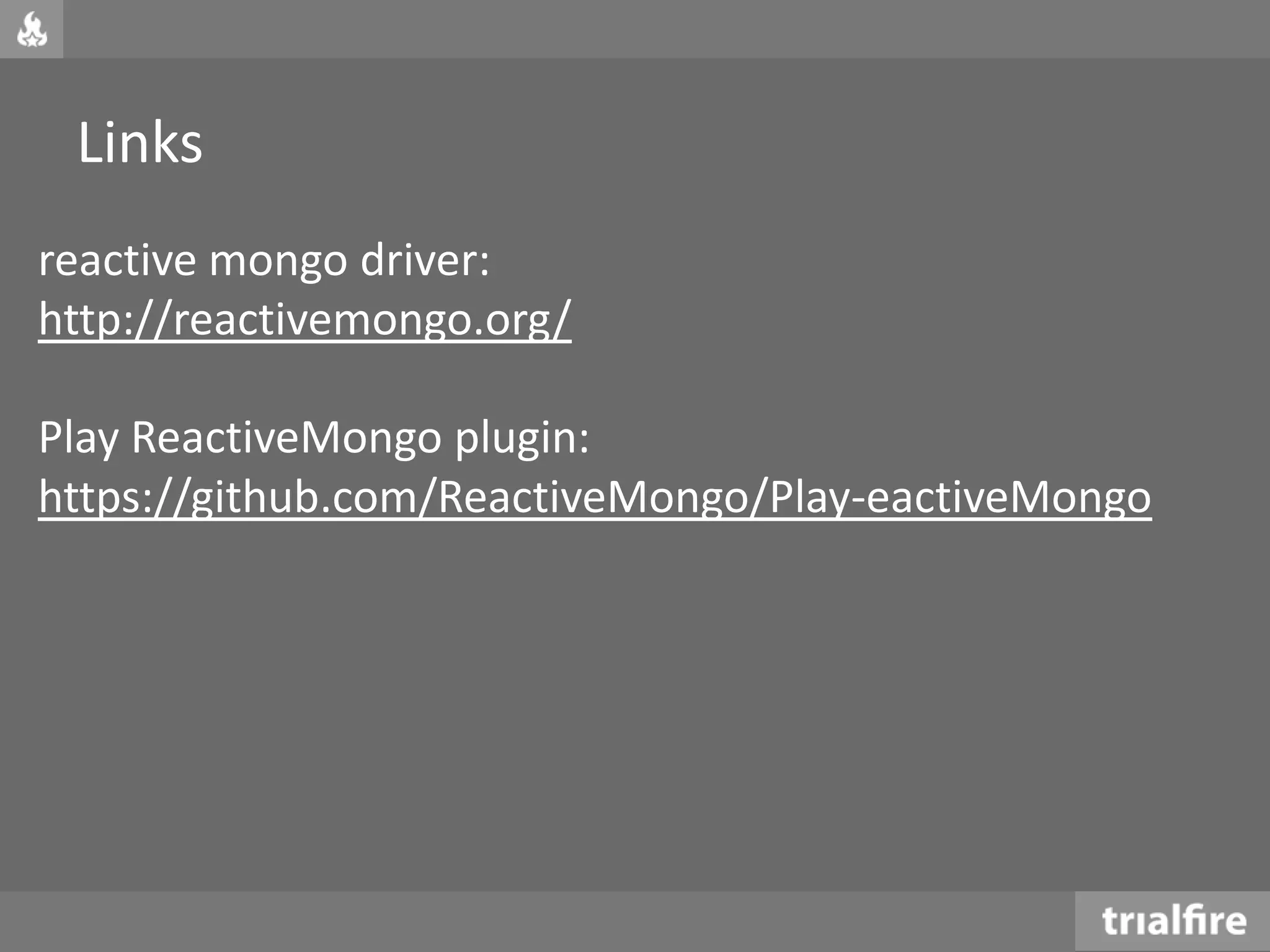
![The End
Thanks for listening
Future[Option[Applause]]
max@trialfire.com marconi@trialfire.com
We’re hiring!](https://image.slidesharecdn.com/playscalareactivemongo-130920133126-phpapp02/75/Play-scala-reactive-mongo-16-2048.jpg)